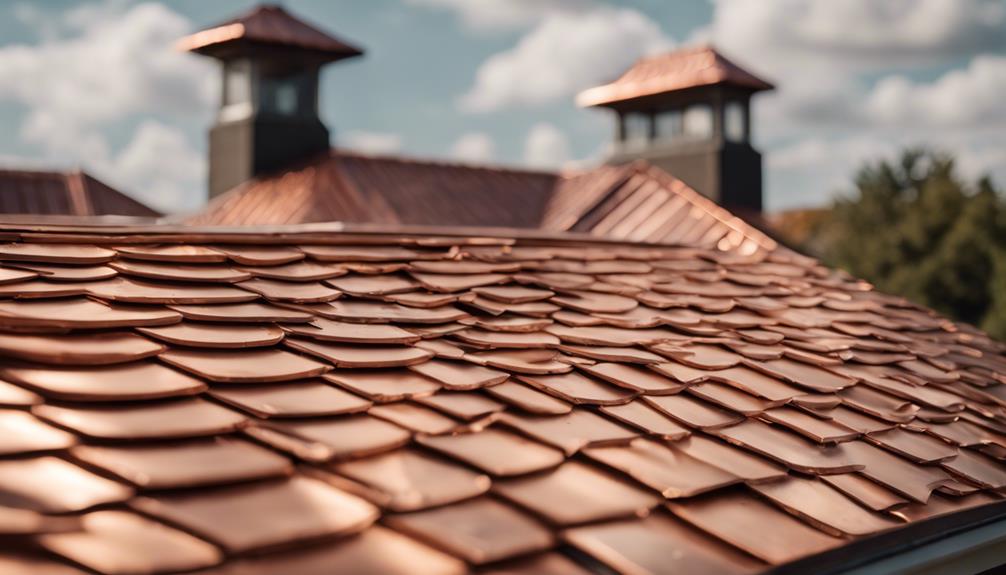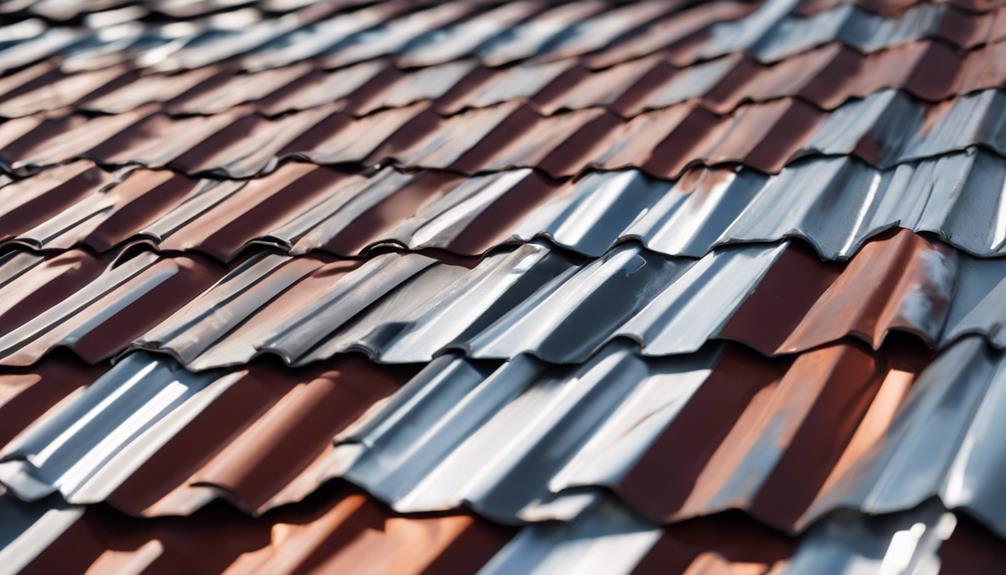What are the Different Types of Metal Roofing?
Navigate the world of metal roofing with an overview of steel, aluminum, copper, and zinc options, each offering unique benefits - find the perfect match for your property.
Exploring metal roofing reveals a variety of options, each with its own features and benefits. Steel, aluminium, copper, and zinc are popular choices, each suiting different needs and preferences.
Choosing a metal roof isn’t just about how it looks; it’s also about how long it lasts, how it handles energy, and how much upkeep it needs. Knowing the differences between these types of metal roofs is key to making a choice that fits your priorities.
Keep reading to learn what sets these materials apart and find the best metal roof for your home.
What is a Steel Roofing?
Steel roofing is made from a zinc-coated steel substrate, steel roofing offers excellent corrosion resistance, making it a long-lasting roofing option suitable for a wide range of climates.
It is a popular choice for its durability, strength, and versatility in various architectural applications. The steel panels are typically coated with a high-quality paint finish that enhances the aesthetics of the roof while providing additional protection against fading and chalking.
One of the key advantages of steel roofing is its high strength-to-weight ratio, which allows for easy installation and reduces the overall structural load on a building.
Additionally, steel roofing is known for its fire resistance, making it a preferred choice for areas prone to wildfires. The material is also recyclable at the end of its long lifespan, adding to its sustainability credentials.
Steel roofing comes in various profiles, including standing seam, corrugated, and ribbed panels, offering architects and homeowners a wide range of design options to choose from.
What Is an Aluminium Roof?
Aluminium roofing is lightweight, resistant to rust, and ideal for coastal areas with high humidity and salt exposure. It reflects heat, making it energy-efficient and reducing cooling costs.
Aluminium panels can be painted or coated for added durability and aesthetic appeal, offering versatility for various architectural styles.
One of the key advantages of aluminium roofing is its exceptional strength-to-weight ratio. This characteristic makes it easy to transport and install, reducing labour costs and structural requirements.
Additionally, aluminium roofs are low maintenance, requiring minimal upkeep over their long lifespan.
Aluminium roofing systems can be coated with various finishes to enhance their appearance and improve durability. These coatings can also increase energy efficiency by reflecting sunlight and reducing heat absorption.
Moreover, aluminium is a fully recyclable material, making it an environmentally friendly choice for sustainable construction practices.
What Is a Copper Roof?

Copper roofing is known for its distinctive appearance and longevity. Over time, copper develops a green patina, adding a unique aesthetic to buildings.
It is highly durable, resistant to corrosion, and can last for over a century. Copper roofing is often used in historic restoration and high-end architectural projects. It is also a lightweight material that is easy to install, making it an attractive option for both residential and commercial buildings.
One of the most notable features of copper roofing is its striking patina that develops over time, giving each roof a unique and elegant look.
This natural weathering process not only enhances the beauty of the roof but also adds to its durability by forming a protective layer that helps prevent corrosion.
While copper roofing tends to have a higher upfront cost compared to other roofing materials, its longevity and minimal maintenance requirements make it a cost-effective choice in the long run.
Additionally, copper is a fully recyclable and sustainable material, further adding to its appeal to environmentally conscious consumers.
What Is a Zinc Roof?
Zinc roofing is valued for its durability, low maintenance, and self-healing properties. When scratched or damaged, zinc forms a protective layer that prevents further corrosion.
Its natural patina evolves over time, giving buildings a unique and attractive appearance. Zinc roofing is often used in modern and sustainable architectural designs.
Zinc roofs have a lifespan of 50-100 years, making them one of the most durable roofing materials available.
Its lightweight nature puts less stress on the structure of the building compared to heavier roofing materials, making it a practical choice for both new construction and roof replacement projects.
While zinc roofing initially comes at a higher cost than some other roofing materials, its longevity and minimal maintenance requirements make it a cost-effective option in the long run.
How to Choose the Right Type of Metal Roofing?

When selecting the most suitable metal roofing for a project, careful consideration of various factors such as durability, aesthetics, and climate compatibility is essential.
The first consideration is the durability of the metal roofing material. Options like galvanized steel, aluminium, and copper offer excellent longevity and require minimal maintenance.
Next, aesthetics play a critical role in choosing the right metal roofing. Different metal types and finishes provide varying looks, from the sleek modern appearance of standing seam steel roofs to the traditional charm of copper roofs.
Climate compatibility is another important factor to keep in mind. For instance, in coastal areas where corrosion from saltwater is a concern, aluminium or zinc-coated steel may be preferable.
Conversely, in regions with high heat or frequent wildfires, metal roofs with a high fire resistance rating, such as steel or aluminium, are recommended.
Frequently Asked Questions
How Do Metal Roofs Perform in Extreme Weather Conditions Such as Hurricanes or Heavy Snowfall?
Metal roofs perform exceptionally well in extreme weather conditions like hurricanes or heavy snowfall due to their durability and high wind resistance. Their interlocking panels and strong material make them ideal for withstanding such challenges effectively.
Are There Any Special Considerations or Maintenance Required for Metal Roofs in Coastal Areas With High Salt Exposure?
In coastal areas with high salt exposure, special considerations for metal roofs include selecting corrosion-resistant materials like aluminium or stainless steel. Regular maintenance such as rinsing the roof with fresh water can help mitigate salt-induced damage and extend the roof’s lifespan.
Can Metal Roofing Be Installed Over an Existing Shingle Roof, or Does the Old Roof Need to Be Removed First?
Metal roofing can be installed over an existing shingle roof, provided certain conditions are met. It’s important to assess the structural integrity of the current roof, make sure of proper insulation, and use appropriate installation techniques to avoid issues.
What Is the Average Lifespan of a Metal Roof, and How Does It Compare to Other Roofing Materials?
Metal roofs typically have an average lifespan of 40-70 years, outlasting many other roofing materials like asphalt shingles. Their durability, resistance to elements, and low maintenance needs make them a long-term investment for property owners.
Are There Any Specific Building Codes or Regulations That Need to Be Followed When Installing a Metal Roof?
When installing a metal roof, adherence to building codes and regulations is essential. Specific requirements vary by location, but common considerations include proper installation methods, fire resistance, wind uplift ratings, and structural support to guarantee safety and compliance.